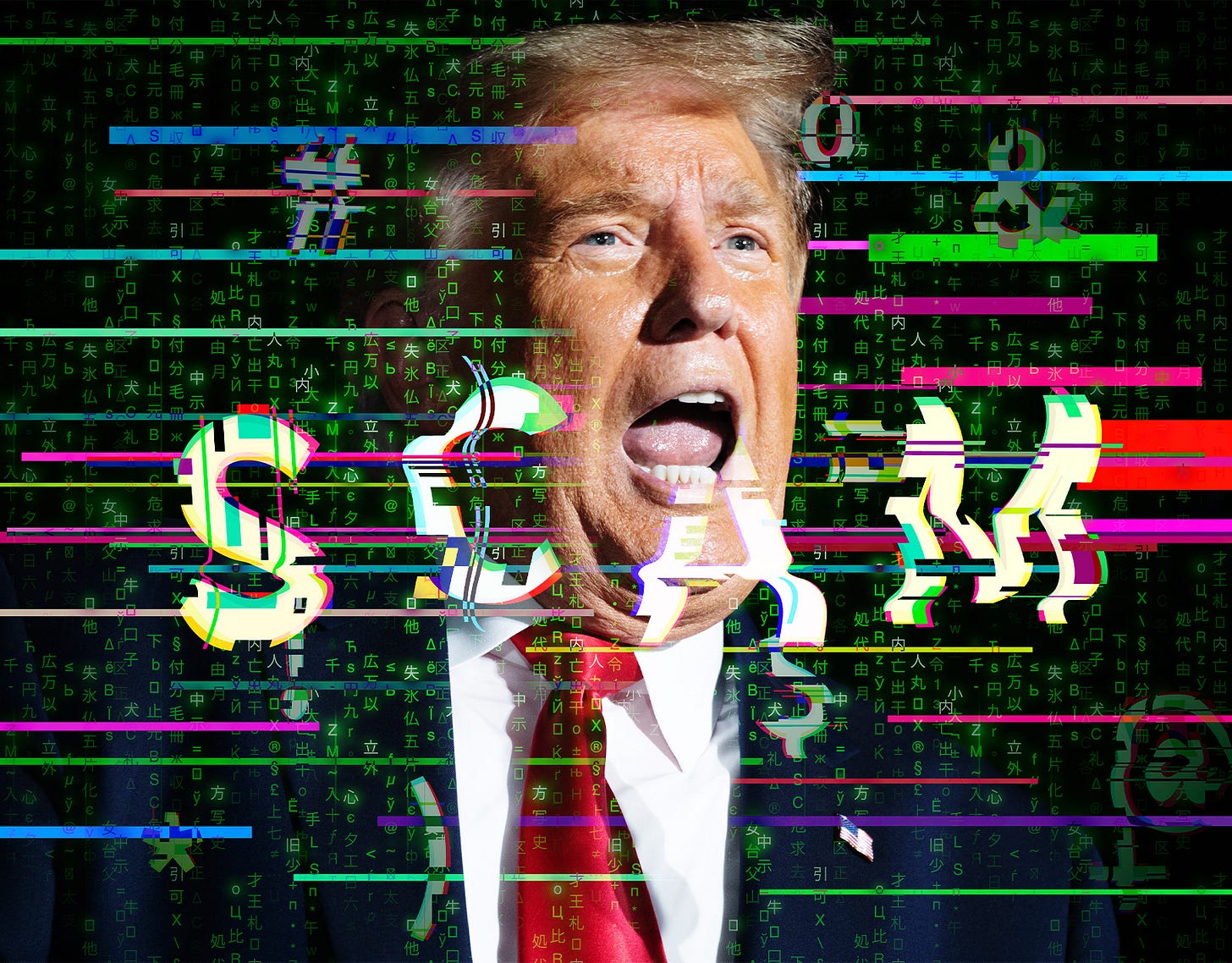The Last Days of the Trump Scampaign
It was never about winning votes. It was about bleeding the rubes dry.

1. #Winning
A reader forwarded me the latest scampaign email from Team Trump and it is some amazing stuff. Have a look:

Right now you’re thinking:
Hold on—the email says right up top not to forward it! Your buddy is screwed!
A “Trump 1000 Club” sounds . . . maybe not super exclusive?
Wait, a “limited-edition” “Trump 1000 Dollar Bill” for $35? It’s like they’re giving money away!
So I’m going to show you what happens when you click through this scam-ad. You get taken to this page:

Tell me something: Does this look like a winning campaign for president? Or does it look like Harold Hill trying to suction every last dollar out of the rubes before he skips town?
The kicker here is that you can get much better fake Trump 1000 dollar bills on eBay for less than $2.
2. More Scams
Remember the Foxconn deal?
In 2018, Donald Trump went to the groundbreaking ceremony on the biggest deal ever in the history of deals. He had wrestled Foxconn, that shifty Taiwanese company that had stolen American jobs, to the ground and forced them to build a factory in America.
USA! USA!
The Foxconn factory was going to be built in Wisconsin and it was going to be, per President Trump, “the eighth wonder of the world.” It was going to bring so many jobs—all the jobs!—back to the American heartland. Sure, the state of Wisconsin had to give Foxconn $4 billion (with a “b”) in tax credits. And yes, that money technically came from Wisconsin taxpayers. But whatever. If you want to Make America Great Again you have to break a few eggs.
And Foxconn’s giant maga-factory (yswidt?) was going to bring 13,000 jobs to Wisconsin which, by total coincidence, was a state Trump needed to win reelection.
At the time, there were people who said “Hmmm. This does not seem to make any sense. Foxconn’s competitive advantage is manufacturing commoditized electronic components at scale using the cheapest possible labor. How does having a factory in the United States fit their business model? This smells like vaporware.”
But those were just ungrateful cucks who were still sad about Hillary Clinton not being president.
Well, Foxconn is in the news again. And like literally everything else in the Trump administration, it didn’t quite work out.
By last year it was clear that the factory was never going to be built. Instead, Foxconn had quietly reconceptualized the Wisconsin project as “research center” and then scaled back from there.
And as of this week, the Wisconsin Economic Development Corporation is desperately trying to claw back money from Foxconn.
Why?
Because two years in, the Foxconn operation in Wisconsin has a grand total of 281 employees.
Which is—if my math is right—12,719 fewer than Foxconn and Trump had promised.
Oh well.
The taxpayers of Wisconsin got royally turned over by Foxconn. But maybe they can frame their Trump 1000 Dollar Bills and hang them over the mantle as a consolation prize.
3. Nukes
The New Atlantis has an excellent piece about the deadlocked politics of nuclear energy. This is a must-read:
America’s nuclear energy situation is a microcosm of the nation’s broader political dysfunction. We are at an impasse, and the debate around nuclear energy is highly polarized, even contemptuous. This political deadlock ensures that a widely disliked status quo carries on unabated. Depending on one’s politics, Americans are left either with outdated reactors and an unrealized potential for a high-energy but climate-friendly society, or are stuck taking care of ticking time bombs churning out another two thousand tons of unmanageable radioactive waste every year.
The consequences of continued stalemate are significant. U.S. nuclear electricity generation has not increased in thirty years, and the average plant is almost forty years old. Deadlines set by the Intergovernmental Panel on Climate Change to act to avoid the worst climate disruptions from carbon dioxide emissions loom ever closer. At the same time, many researchers maintain that most nuclear plants are still far from safe, that repeats of disasters like Fukushima or Chernobyl are not a matter of if but when.
Why can’t we resolve this debate? Why have we been having the same basic argument for fifty years, without any fundamental redesigns to the technology since the 1970s to show for it? . . .
The story about nuclear power offered by its most vocal advocates is not scientific but scientistic. It is a story about technocrats shoving aside the public, cherry-picking studies with the most favorable assumptions built in, and declaring as “safe” a reactor design that inherently tends toward catastrophe. The language of Shellenberger and Pinker echoes the foolhardy enthusiasm of the atomic age, when advocates dismissed skeptics of even the most fanciful projects — like nuclear-powered jet planes — as lacking sufficient vision. We submit to this rhetoric at our peril.
Yet it is also premature to abandon nuclear power wholesale. How then can citizens and policymakers move past the stalemate to develop nuclear technologies that benefit more people more of the time? By examining the technocratic roots of the current technology and how scientism holds us back, we outline a path to bring democracy back to the debate, allowing societies to realize the best that nuclear energy has to offer.


